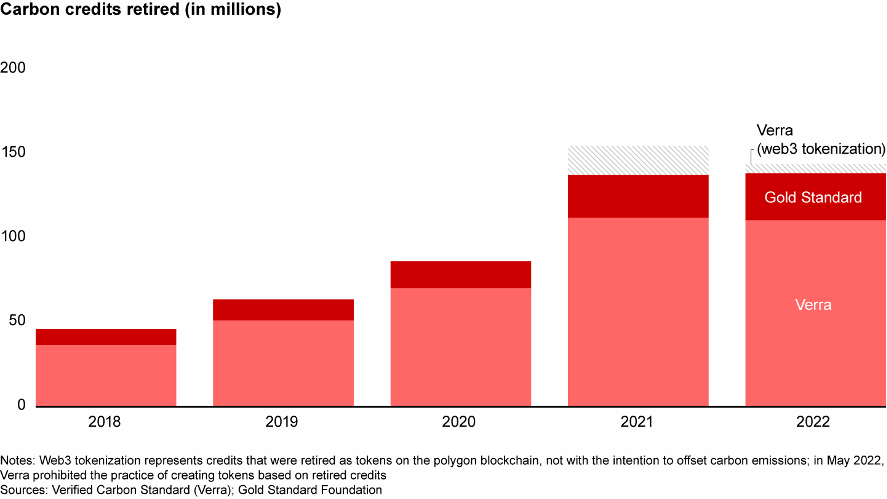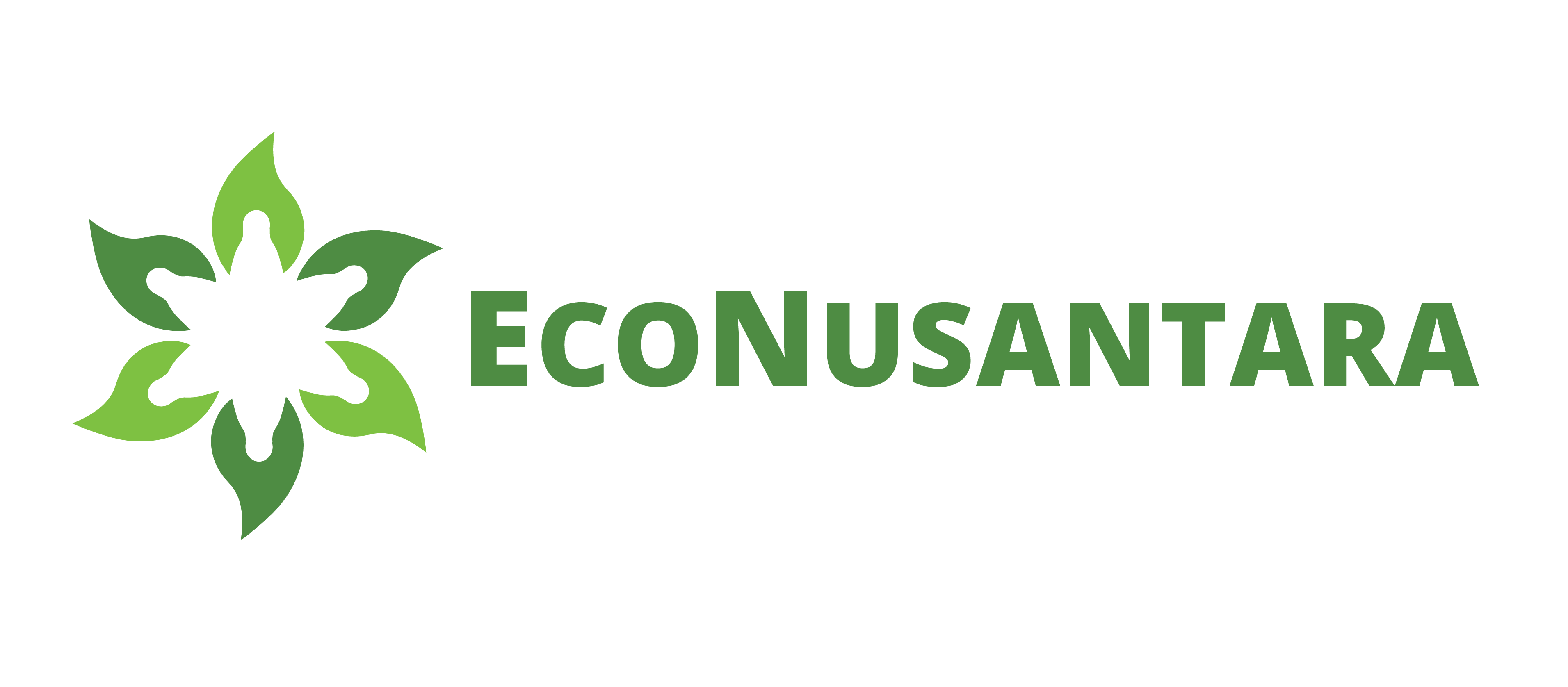Overview
- The voluntary carbon market has grown rapidly over the past five years, but that growth has begun to slow over the past year.
- The uncertainty posed by policy shifts and concerns about the viability of some credits may have caused some potential buyers to take a wait-and-see attitude.
- The carbon credit market will rationalize or be held back by uncertainty and complexity.
- To spur growth, carbon market advocates are likely to push for consistent and clear global standards that give market participants greater confidence.
This article is a free translation of Brad Denig, Allister Furey, Dale Hardcastle, Cate Hight, and Henning Huenteler’sarticle, as of February 13, 2023, and the article can be read here: https://www.bain.com/insights/voluntary-carbon-markets-in-2023-a-bumpy-road-behind-crossroads-ahead/
Globally, 2021 is a time of increased optimism in the voluntary carbon market (VCM= VCM), then 2022 is the period of realizing part of that optimism. The exponential growth of the carbon market during 2019 and 2021 driven by the acceleration of net-zero commitments has made giant companies bet big on their final value. But by 2022, all of these bettors face new complexities regarding marketing and the role of carbon credits in their sustainability strategies more broadly.
Carbon markets are at a turning point: No one knows whether uncertainty will be resolved through cooperation by participants and regulators, leading to even greater growth, or the market will be hampered by confusion and poor adjustments. Confusion can cause many potential buyers to wait for clarity, thereby slowing the growth of VCM and limiting the potential of this important scheme in the fight against the climate crisis.
Looking at the market dynamics of 2022 and the outlook for 2023 gives companies that follow the VCM journey an idea and hope to take advantage of the opportunities in it.
2022: Bumper-than-expected road
Although market sentiment picked up after COP26, VCM grew more slowly in 2022 than many expected (see Figure 1).

Figure 1. Carbon credit growth stagnates in 2022
The broader macroeconomic environment does affect carbon markets, but it is also shaped by four main uncertainties:
- Long foundation for reaching consensus on credit quality and demand integrity: VCM Governance Bodies such as the Integrity Council for the Voluntary Carbon Market (ICVCM)[1] and the Voluntary Carbon Markets Integrity Initiative (VCMI)[2] is considering public comments on the long-awaited draft guidelines for the supply and demand sides of the market. This proposal signals greater accountability in the future. But the range of reactions to the proposal—from criticism that it was too restrictive and could cripple markets to concerns that it wasn’t tight enough to create real change—shows how difficult it is to find the right balance.
- Shifting policy framework: The move by some national governments, notably the Indonesian government, to restrict the sale and export of carbon credits to international carbon markets is causing concern among buyers. Some governments see these emissions reductions as essential to achieving their national climate change plans, and they want to avoid selling what is increasingly considered vital national resources. By the end of 2022, some clarity has emerged about this national position and how it relates to the carbon trading rules being developed under the Paris Agreement. But some uncertainty continues, especially as Paris Agreement negotiations will continue at COP28 later this year.
- Continued uncertainty about carbon creditworthiness: Some of the enthusiasm in carbon markets in 2021 is based on the belief that accelerating net-zero commitments by corporations will increase direct demand for carbon credits. It is reasonable to assume that companies need to use carbon credits, as the cost of reduction remains high in some industries, and credits provide a way to demonstrate climate superiority beyond credible decarbonization pathways. However, uncertainty remains regarding the acceptable balance between decarbonisation and credit use, as well as whether credit can and should be used before companies reach net-zero.
- Rising public scrutiny and accusations of “greenwashing”: Market participants are under greater public scrutiny, and many are accused of “greenwashing” for promoting the use of their carbon credits. The complexity of the market and the lack of transparency in projects pose difficult risks for corporations across industries ranging from energy and airlines to chemicals and consumer goods. Several initiatives have begun to provide support for corporations on how to make wise decisions about carbon credits, including VCMI, the UN High-Level Expert Group on the Net Zero Emissions Commitments of Non-State Entities[3], and the Science Based Targets initiative (SBTi)[4] . Even so, some companies choose not to participate in the market or at least not promote their engagement—a practice known as “greenhushing“.
Outlook for 2023: Carbon markets at a turning point
Several increasingly important trends will shape carbon markets by 2023, each with the potential to strengthen the market, improve integrity, and help build scale. But as the stakes get higher, the trend will also pose a threat that creates confusion, disagreement, and division.
Perhaps there will be a heated debate about the claims that credit buyers can make. VCM has no consensus on the claims that buyers of carbon credits can make. Carbon neutrality claims are common, but it is often unclear whether this refers to direct emissions offsetting or also includes indirect emissions along the value chain. Often, it is not clear what type of credit is being considered. Avoidance or deletion credits? Short-term or long-term storage? And what is the level of quality?
Given this, different companies may file the same claim for different offset approaches , which do not value investing in strategies that rely on high integrity or credit quality. Carbon markets must work towards a consensus on voluntary claims standardization. In 2023 and beyond, there will be heated debate about which claims are appropriate for credit buyers to make and for VCMI to have a central role in this debate.
The market for nature-based solutions (Nature-based Solutions = NbS) will begin to measure the value of ecosystems and biodiversity. A greater focus on ecosystems – as seen in the decisions of the COP27 and the COP15 biodiversity summit – will drive the growth of the market for biodiversity credits. The Biodiversity Credit Alliance[5], a broad coalition of public, private, and civil sector participants, is forming a credible and scalable biodiversity credit market. Other new standards for NbS, such as those created by the Science Based Targets Network (SBTN)[6] or the Taskforce on Nature-related Financial Disclosures (TNFD)[7], are expected to be launched in 2023. This, along with a public focused on nature. and private funds (e.g., the Global EbA Fund by the UN Environment Programme[8] or Bezos Earth Fund[9]), and the expansion of business coalitions with a strong focus on biodiversity (e.g., the Alliance for Natural Climate Solutions or the One Planet Business for Biodiversity[10]) all lead to an increased focus on high-quality nature-based solutions in the near future.
A number of promising pilot projects use a crediting approach to certify biodiversity values and divide managementimpacts into purchasable units. But measuring biodiversity is tricky. And integrating more qualitative claims (=biodiversity) into carbon markets can create more confusion than clarity. Carbon markets are based on a single measurable metric—that is, carbon emissions—but take decades to mature. A concentrated global effort will be needed to determine how to integrate biodiversity impacts into markets, to avoid greater complexity.
The demands to regulate VCM will get louder. Carbon markets established by the United Nations and national governments under the Kyoto Protocol declined as European demand for carbon credits dried up[11] since 2012. VCM fills the void and expands, providing an increasingly popular pathway for companies to demonstrate climate protection. But the lack of regulation has resulted in a complicated set of actors, conventions and standards. As the voluntary market has grown in volume and value, they have caught the attention of regulators, who want to establish tighter guardrails for private sector climate action .
In the second half of 2022, a number of governments and regulatory bodies showed interest in regulating VCM to help provide the necessary clarity. The US Commodity Futures Trading Commission (CFTC) held a meeting to discuss this carbon market situation and seek public comment on climate-related financial risks in derivatives and commodity markets. The UK Climate Change Committee (CCC), a legal body advising the UK government on climate change, has urged the UK government to advise the UK government to guide and regulate the market. And the International Organization of Securities Commissions (the International Organization of Securities Commissions = IOSCO), an association of international financial market regulators, launched a public consultation on key considerations for improving the resilience and integrity of VCMs.
In the short to medium term, more regulatory and oversight involvement in VCM is expected. If done well, this can create a much-needed guardrail to give the market the confidence it needs to thrive. However, if done hastily, and without learning from the breakthroughs that have been made by voluntary actors, it can also cripple emerging infrastructure and limit the adoption of VCM regulations and oversight.
What it means for the company: Bold action is necessary, despite the uncertainty
In this rapidly changing environment, it is difficult for companies to make the right decisions, but the urgency of the climate crisis does not allow to wait for a perfect market. Corporate executives need to act decisively, even in a turbulent environment. Some actions can help navigate uncertainty and avoid inaction.
Act today, not tomorrow. Bold decarbonization actions remain a top priority for companies in their net-zero journey. As companies set ambitious goals to align their decarbonization plans with a 1.5-degree future, many realized they needed to rely on carbon credits to meet their short-term emissions reduction goals. Taking an initial stance will help companies grow their carbon credit position and give them an edge over others.
Consider carbon credits as part of the strategy holistically. Carbon credits are not the only solution to climate action. Companies should carefully consider their options for decarbonizing their own value chains, using carbon credits as a last resort. Integrating other benefits such as biodiversity, poverty alleviation, or social inclusion in their carbon credit choices can help companies meet their broader sustainability goals.
A number of companies will certainly want to also explore commercial opportunities in credit beyond their own business needs. These companies need to determine where to participate in the value chain and how to get adequate high-quality credit, whether from passive procurement or moving upstream to investing in project development. They also need to identify critical supporters, including building the necessary capabilities and developing a clear communication plan that reduces reputational risk.
Prioritize high-quality credit. To mitigate reputational (and potential compliance) risk, companies should only invest in high-quality carbon credits.
The most important criteria for carbon credits include:
- additionality because carbon credits need to represent a real and measurable reduction or removal of a ton of carbon dioxide that would not have occurred without the incentives created by carbon credit revenues;
- permanence due to reduction or elimination must be permanent to minimize risk reversal and neutralization of positive impacts; dan
- does no harm because the underlying activity should not contribute to social or environmental damage, and ideally, should have significant additional benefits, such as increasing biodiversity or reducing poverty.
Performing high on these criteria will reduce risks that arise unexpectedly, such as reversal of climate change impacts or the discovery that credit comes from activities that represent a business-as-usual scenario.
Review the approach to using carbon credits as often as possible. Carbon markets are getting more attention and changing rapidly. Constant uncertainty requires each actor to pay attention to the developments taking place. Corporate executives should look at their engagement with carbon markets through agile strategies and often revisit their approach to ensure it is in line with the ever-changing market consensus.
Public pressure on companies to take urgent action has reached unprecedented levels. Nevertheless, the increasing complexity of VCM will require companies to build the ability and expertise in accessing, analyzing, and understanding the credit they purchase to ensure the integrity and quality of the credit purchased. Winners in 2023 and beyond will be those with a clear strategy to navigate this complex and rapidly evolving market landscape.
Footnotes
- https://icvcm.org/public-consultation/
- https://vcmintegrity.org/wp-content/uploads/2022/06/VCMI-provisional-claims-code-of-practice.pdf
- https://www.un.org/sites/un2.un.org/files/high-level_expert_group_n7b.pdf
- https://sciencebasedtargets.org/blog/going-above-and-beyond-to-contribute-to-societal-net-zero
- https://www.biodiversitycreditalliance.org/
- https://sciencebasedtargetsnetwork.org/take-action-now/take-action-as-a-company/what-you-can-do-now/
- https://tnfd.global/about/
- https://globalebafund.org/
- https://www.bezosearthfund.org/
- https://www.wbcsd.org/Projects/OP2B
- https://www.ieta.org/resources/Resources/GHG_Report/2021/IETA-2021-GHG-Report.pdf

